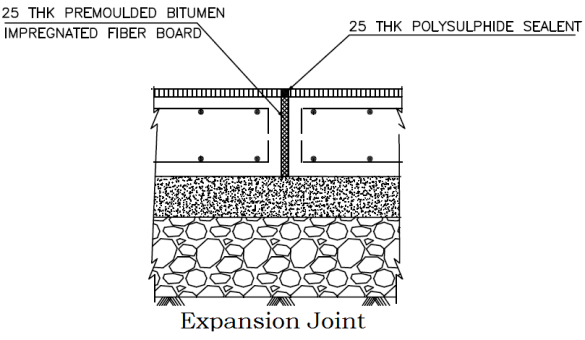Difference Between Expansion joints, Contraction Joint and Construction Joints
Joints source are connecting two different elements into one element. But you may aware that the weakness zone of a structure is “Joint” so if possible avoid it.
Although in construction, the joints are using to produce stability for concrete, masonry, plastering. Most of the construction element has formed by different material and due to the weather condition that may shrink or expand.
The concrete shall very much impact by the weather condition. Different types of joints are used to prevent the concrete cracks happening by the weather condition.
So now we are going to discuss the different types of joints in construction works.
The construction joints are advisable to avoid if it is not possible then reduce the number of construction joints.
So the expansion joints gap are provided to accommodate the movement happening by the expansion or shrinkages and it is avoiding the disfiguration of the structure.
Mostly the expansion joint gaps are providing in large structure & bridge girder to spread eventual stress. The joint gaps are filled by the expansion material like fibre, bitumen or some other special material.


We hope you may get clarity about the different types of joints in construction. You may like to read Different types of column.
Although in construction, the joints are using to produce stability for concrete, masonry, plastering. Most of the construction element has formed by different material and due to the weather condition that may shrink or expand.
The concrete shall very much impact by the weather condition. Different types of joints are used to prevent the concrete cracks happening by the weather condition.
So now we are going to discuss the different types of joints in construction works.
Types of Joints in Construction
- Construction Joints
- Expansion Joints
- Contraction Joints
Construction Joints
At first, we cannot pour a larger quantity of concrete in a single time. So at that time, a certain portion has poured as per the recommended shuttering design and the remaining portion will be poured after a certain period.In that, the construction joints are using to connect the old and fresh concrete and it is also called as cold joints.

Specification of Construction Joints
- The existing concrete should have an uneven surface and free from dust.
- A proper vibration has to be done near to the joint to develop the proper bond between the old and new concrete.
- After pouring of new concrete the joint surface must be clean out laitance and slurry by the wire brush.
The construction joints are advisable to avoid if it is not possible then reduce the number of construction joints.
Expansion Joints
As we discussed, the construction materials are formed by the different raw material. The concrete may shrink or expand due to the weather condition.So the expansion joints gap are provided to accommodate the movement happening by the expansion or shrinkages and it is avoiding the disfiguration of the structure.
Mostly the expansion joint gaps are providing in large structure & bridge girder to spread eventual stress. The joint gaps are filled by the expansion material like fibre, bitumen or some other special material.

Specification
- Expansion joint might be provided in mid of each span in bridges.
- The provision of expansion joints is when the structure length exceeding 45m.
- The reinforcements should not be provided on the expansion joint area.
- The expansion joint material will be different based on the structure.
- The expansion joints are provided as per IS 3414.
Contraction Joints
It is another type of joints which controls the cracks happening due to shrinkages. The contraction joints are placed as a groove where the crack may form in concrete. If the shrinkage crack is formed in the concrete slab then the contraction joints prevent spreading on the other area.
Specification
- The width of the groove should not be less than 5mm.
- The contraction joint depth is 1/4th of the Concrete mean depth.
- It should be placed in the weakest zone of the slab.
We hope you may get clarity about the different types of joints in construction. You may like to read Different types of column.




Comments
Post a Comment
Please do not enter any spam in the comment box.